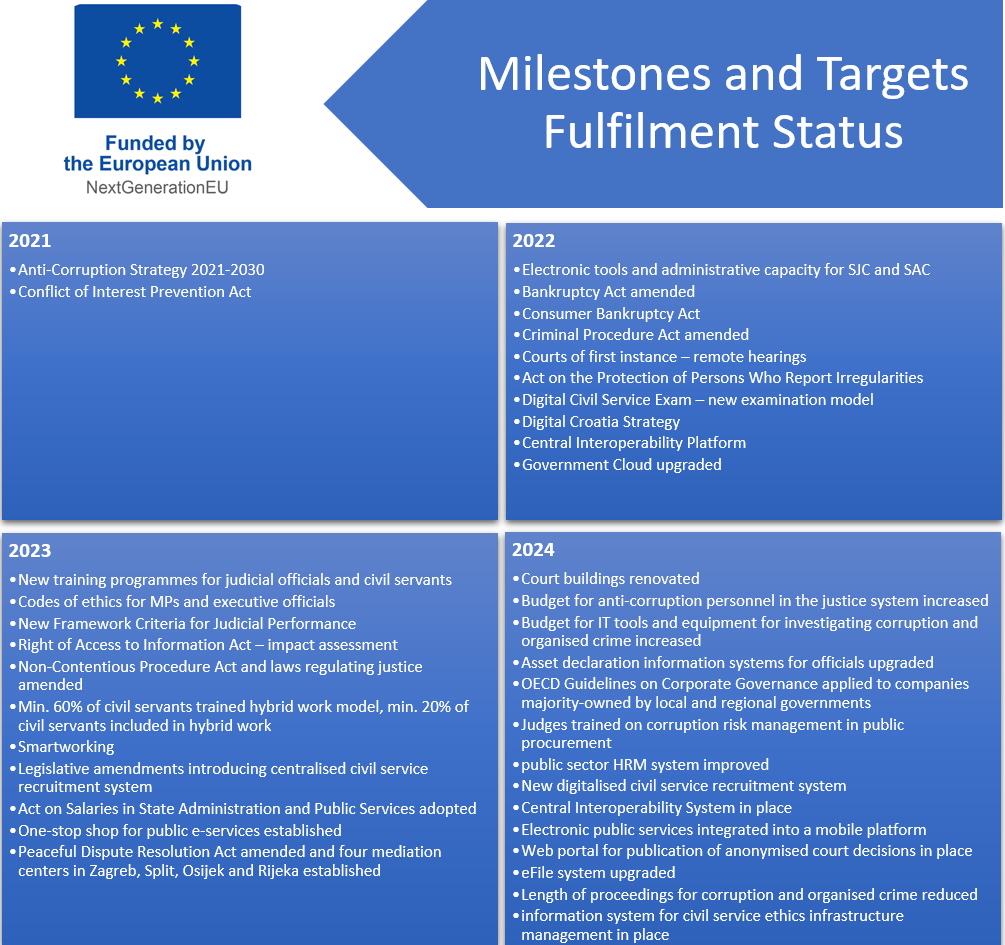For its National Recovery and Resilience Plan, Croatia has secured 10 billion Euro from the Recovery and Resilience Facility, i.e. € 5.8 billion in grants and around € 4.2 billion in favourable loans.
Strengthening of the State, whose role has proven to be irreplaceable amidst the COVID-19 pandemic and devastating earthquakes in Croatia, is one of the key segments of recovery and resilience. In building a more resilient and just state, the focus will be on the implementation of reforms and investments aimed at creating an efficient, digital and competent public administration. Furthermore, it is of utmost importance to continue with the development of an impartial, effective and universally accessible judiciary.
The Ministry of Justice, Public Administration and Digital Transformation is responsible for implementing reforms and investments under component C2 - Public administration, justice and state assets, sub-components C2.2 - Further improving the efficiency of public administration, C3 - Digital transformation of society and public administration, C2.5 - Modern justice fit for future challenges, and C2.6 - Preventing and combating corruption.
Croatia submitted its 5th payment request under the Recovery and Resilience Facility (RRF) in April 2024, and in June Croatia became the most successful EU Member State in implementing reforms and investments from the RRF, as it is the first country to which the European Commission has given a preliminary positive assessment of the 5th instalment request. So far, Croatia has met 157 of the 157 planned reform and investment indicators.
.png)

Reforms and investments under the responsibility of the Ministry of Justice, Public Administration and Digital Transformation
C2.1 Capacity building for the design and implementation of public policies and projects
C2.2 Further improving the efficiency of public administration
C2.3 Digital transformation of society and public administration
C2.5 Modern justice fit for future challenges
C2.6 Preventing and combating corruption
For additional information on the National Recovery and Resilience Plan 2021-2026 please see the dedicated
website.



.png)
